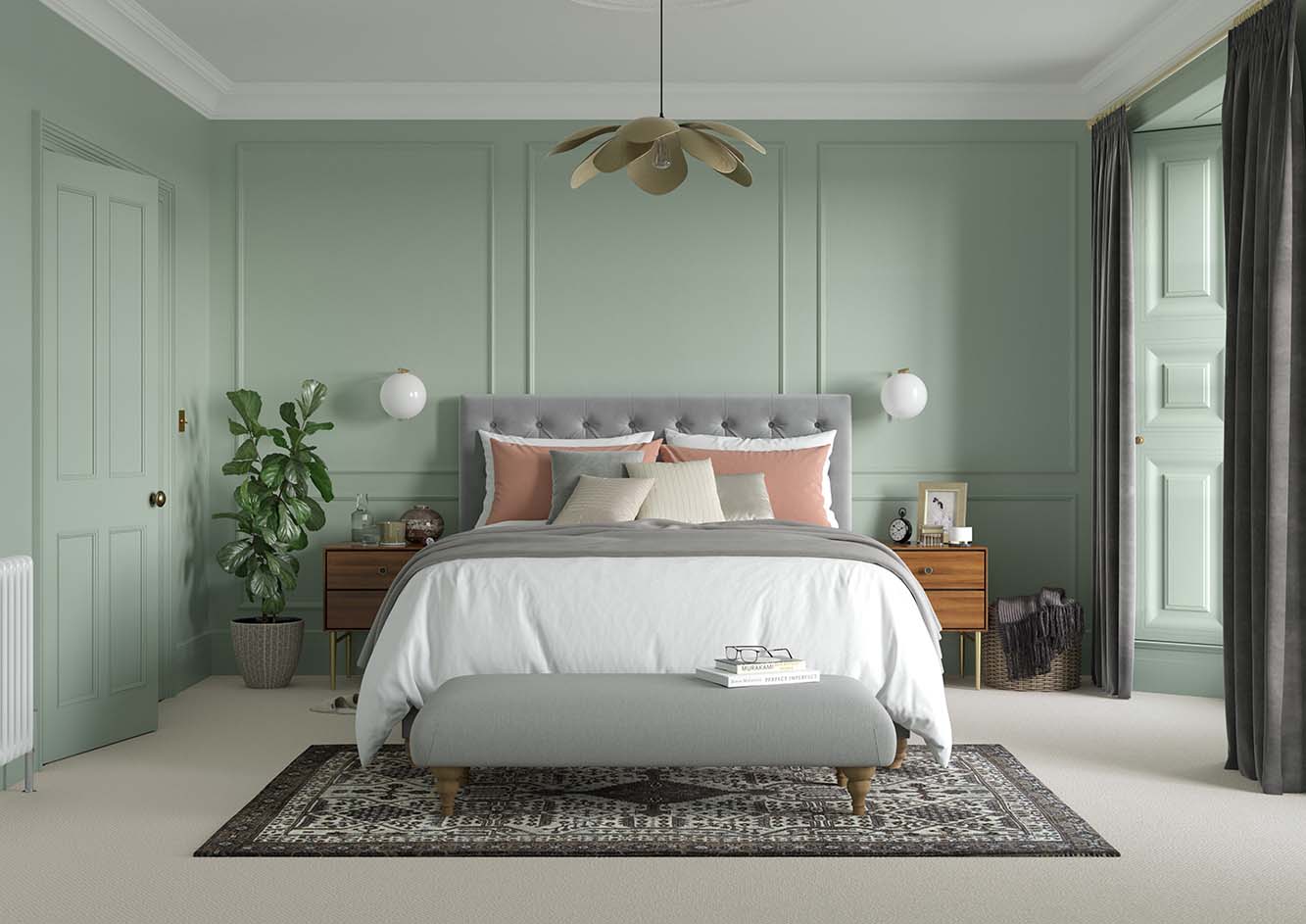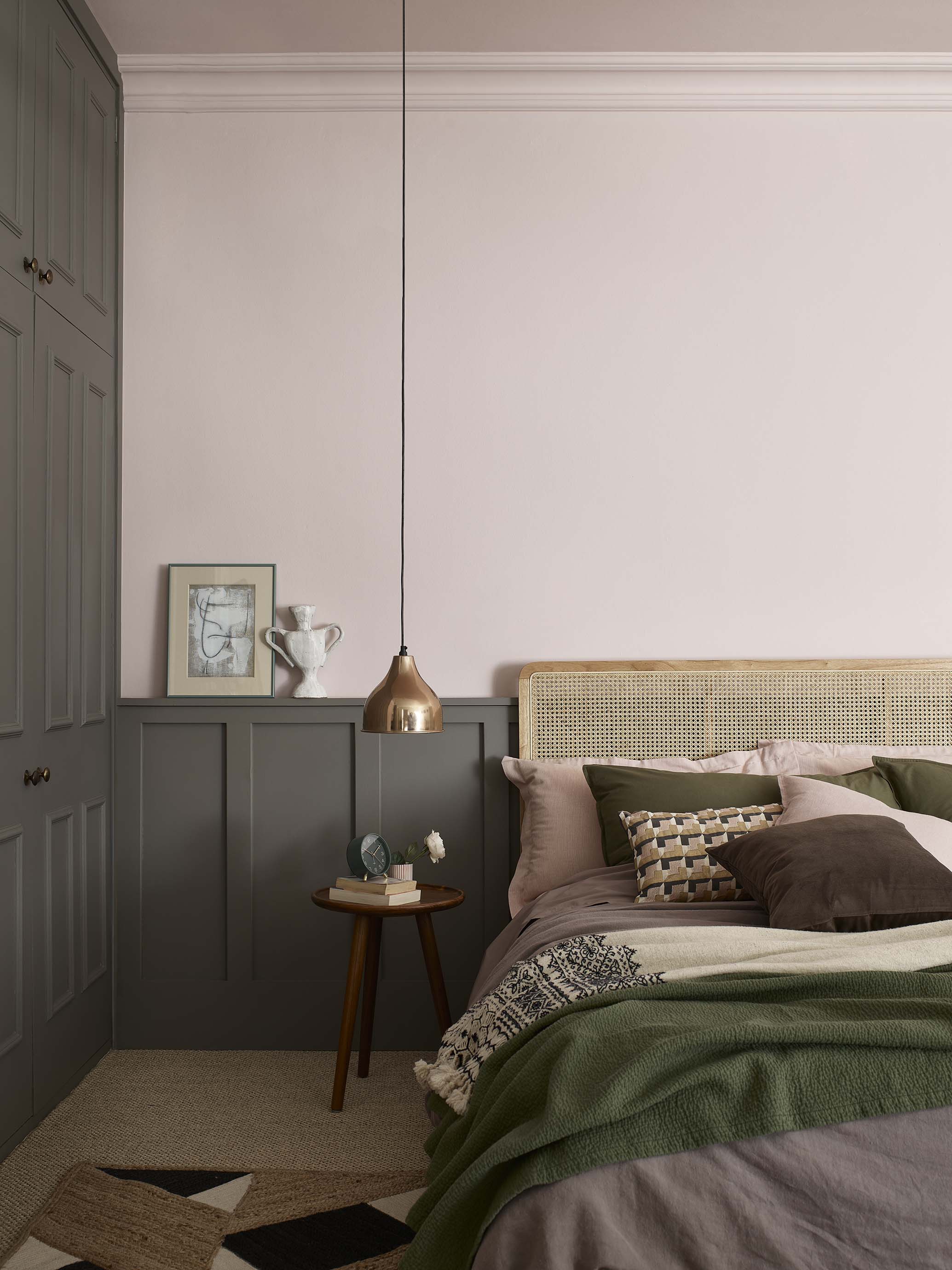Inspiration Article
Colour Confidential: Calming colours for bedrooms
Calming colours for bedrooms and 3 ways to use them
How can you invite peace and tranquillity into your bedroom? According to Dulux Creative Director, Marianne Shillingford, it’s through calming paint colours. Here, we share Marianne’s favourite calm paint colours for bedrooms and the techniques you can follow to create your own soothing sanctuary.
But first, what colour helps you sleep?
It goes without saying that having the right mattress, pillows and bedding are key ingredients to a good night’s sleep, yet the colours you paint your bedroom walls can be just as influential.
Both pale and deep tones have their advantages in bedrooms. While pale colours can help to clear the mind, deep shades can set the mood for relaxation. The Dulux Heritage collection is arranged into tonal palettes to make finding calm paint colours for bedrooms easy.
Connect to nature
Green is perfect for serene bedrooms because of its calming effect and connection with nature. Whether you’re searching for a light hue that can transport you to the rolling countryside or a darker shade for a dramatic wild forest look, greens naturally create spaces that soothe our soul.
Marianne’s top calming colours for bedrooms: Dulux Heritage Veranda Green, Sage Green, DH Slate, Mallard Green.

Image: Dulux Heritage Sage Green
Pastel tones
Pastel colours might not be your first pick, but softer, paler pastel tones shouldn’t be overlooked when decorating a serene bedroom. A delicate blush pink, for example, is easy to be around and can make you feel calm as soon as you retreat to your bedroom. Peaceful and inviting, pastel tones are the perfect antidote to a hectic, rushed-off-your-feet kind of day.
Marianne’s top calming colours for bedrooms: Dulux Heritage Powder Colour or Potters Pink
Split wall effect
Splitting the wall horizontally with two colours gives a room an instant relaxed look because it reminds us of a balancing natural horizon. Use the Dulux Heritage colour chart to seek out two complementary shades, one from the Pale Tones and the other from the Mid Tones. Marianne suggests using the deepest shade on the lower third and skirting board for a grounded look or on the top third of the wall (even the ceiling), if you want the room to look intimate and cosy.
Marianne’s paint colour ideas for a two-tone wall: Dulux Heritage Pale Nutmeg with Pumice Brown or Chiltern White with Quartz Grey.

Image: Dulux Heritage Potters Pink, Dulux Heritage Mud Lark
5 simple steps for a split wall effect
What you’ll need:
- A tin of each of your chosen paint colours
- A roller and tray
- Pencil
- Measuring tape
- String
- Chalk
- Masking tape
- Paint brushes
Step 1. Paint the whole wall in your base colour and leave to dry. Once the paint is completely dry, you’re ready to create your split wall.
Step 2: Chalk your line by measuring down from the ceiling and marking a few dashed pencil lines using the tape measure. Next, rub chalk along a length of string. Stretch the string across the wall and secure it with masking tape at each end. Check the string is straight, then ping it to leave a chalk line across the wall.
Step 3: Apply a strip of masking tape below the bottom line of chalk.
Step 4: Apply your second panel of paint and for a perfect finish, go just over the edge of the masking tape.
Step 5: Wait until the paint is still slightly wet, then peel away the masking tape to reveal your split wall.
Explore more calm paint colours for bedrooms in the Dulux Heritage collection or find more inspiration on how to create soothing spaces in your home.
Make sure you follow us on Instagram and Facebook. Share your Heritage colour story with us using #MyHeritageHome and tag @duluxheritage.